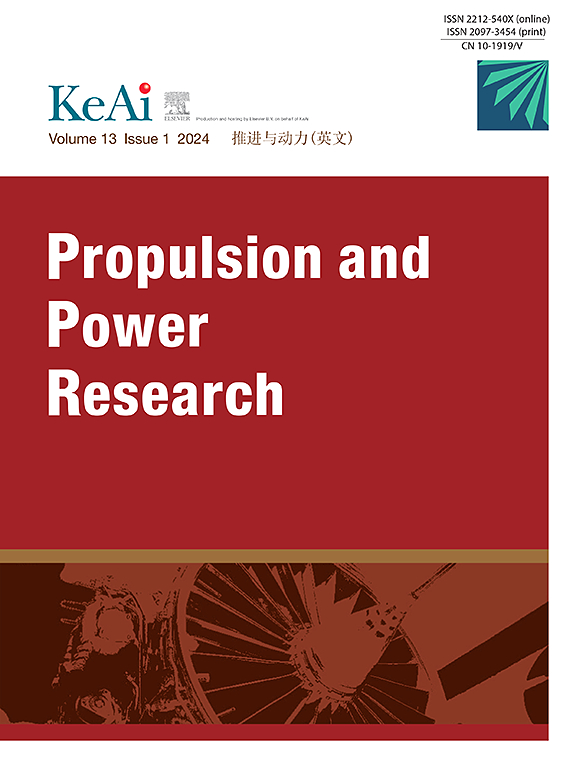金属-陶瓷功能梯度材料纳米梁在超音速流体作用下的颤振分析
IF 5.4
2区 工程技术
Q1 ENGINEERING, AEROSPACE
引用次数: 0
摘要
本文研究了由金属-陶瓷功能梯度材料制成的纳米梁在超音速流体作用下的尺寸相关颤振分析。金属和陶瓷的体积分数沿纵向和厚度方向变化。尺寸效应基于非局部应变梯度理论(NSGT)建模,表面效应基于Gurtin-Murdoch表面弹性理论。采用Reddy的三阶剪切变形梁理论(TSDBT)对纳米梁进行数学建模,并根据活塞理论的线性近似对其气动压力进行建模。利用哈密顿原理得到控制方程和边界条件,并用微分求积分法进行近似求解。验证了所提工作的收敛性和精度,并考察了材料级配指标、非局部和应变梯度参数、厚长比和表面效应的结合等参数对颤振边界的影响。研究发现,表面效应的加入对纳米梁的颤振边界有显著的影响,使得纳米梁的临界气动压力和颤振频率都有所提高。本研究的目的是研究非局部和应变梯度参数以及金属和陶瓷在纵向和厚度方向上的体积分数变化如何影响FG纳米梁的气动弹性稳定性特性。本文章由计算机程序翻译,如有差异,请以英文原文为准。
Size-dependent flutter analysis of a nanobeam made of metal-ceramic functionally graded materials subjected to supersonic fluid flow
In the presented paper, the size-dependent flutter analysis of a nanobeam made of metal-ceramic functionally graded (FG) materials subjected to supersonic fluid flow is examined. The volume fractions of metal and ceramic vary along both longitudinal and thickness directions. The size effects are modeled based on the nonlocal strain gradient theory (NSGT) and the surface effects are included according to the Gurtin-Murdoch surface elasticity theory. The mathematical modeling of nanobeam is performed in the framework of Reddy's third-order shear deformation beam theory (TSDBT), and the aerodynamic pressure is modeled according to the linear approximation of the piston theory. The governing equations and boundary conditions are obtained utilizing Hamilton's principle and are solved approximately via the differential quadrature method (DQM). Convergence and precision of the presented work are proved and the effects of several parameters on the flutter boundaries are inspected such as material gradation indexes, nonlocal and strain gradient parameters, thickness-to-length ratio, and incorporation of surface effects. It is discovered that the incorporation of the surface effects has a remarkable impact on the flutter boundaries of nanobeams and increases both critical aerodynamic pressure and flutter frequency of the nanobeam. The aim of this work is to examine how the aeroelastic stability characteristics of an FG nanobeam can be affected by the nonlocal and strain gradient parameters and the variations in the volume fractions of the metal and ceramic in the longitudinal and thickness directions.
求助全文
通过发布文献求助,成功后即可免费获取论文全文。
去求助
来源期刊

Propulsion and Power Research
Multiple-
CiteScore
7.50
自引率
5.70%
发文量
30
期刊介绍:
Propulsion and Power Research is a peer reviewed scientific journal in English established in 2012. The Journals publishes high quality original research articles and general reviews in fundamental research aspects of aeronautics/astronautics propulsion and power engineering, including, but not limited to, system, fluid mechanics, heat transfer, combustion, vibration and acoustics, solid mechanics and dynamics, control and so on. The journal serves as a platform for academic exchange by experts, scholars and researchers in these fields.
 求助内容:
求助内容: 应助结果提醒方式:
应助结果提醒方式:


